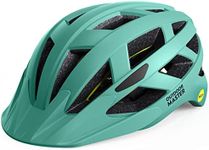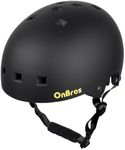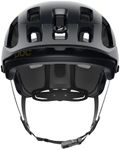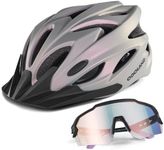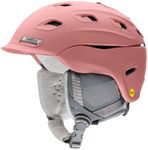Buying Guide for the Best Women Bike Helmets
Choosing the right women's bike helmet is essential for both safety and comfort while riding. A good helmet not only protects your head in case of a fall or accident, but also ensures you feel comfortable and confident on your rides. When shopping for a helmet, it's important to consider how and where you'll be riding, as well as your personal preferences for fit, style, and features. Understanding the key specifications will help you make an informed decision and find a helmet that suits your needs.Fit and SizingFit and sizing refer to how well the helmet sits on your head and whether it matches your head's circumference and shape. This is crucial because a helmet that is too loose or too tight won't provide proper protection or comfort. Helmets usually come in sizes like small, medium, and large, or with adjustable systems to fine-tune the fit. To pick the right one, measure your head's circumference just above your eyebrows and compare it to the manufacturer's sizing chart. Try on different helmets if possible, and look for one that feels snug but not uncomfortable, with no pressure points.
Safety CertificationsSafety certifications indicate that the helmet meets certain safety standards set by organizations such as CPSC, EN, or ASTM. This is important because it ensures the helmet has been tested for impact protection and other safety features. Most helmets sold in reputable stores will have at least one certification. When choosing, always check for a certification label inside the helmet. For most riders, a helmet with a standard certification is sufficient, but if you plan to ride in more challenging conditions, you might want to look for additional certifications.
VentilationVentilation refers to the number and placement of air vents in the helmet, which help keep your head cool during rides. This is important for comfort, especially on hot days or during intense activity. Helmets with more vents generally offer better airflow but may be lighter and less insulated. If you ride in warm climates or tend to sweat a lot, look for a helmet with plenty of well-placed vents. For cooler weather or short, casual rides, fewer vents may be sufficient.
WeightWeight is how heavy the helmet feels on your head. A lighter helmet is generally more comfortable, especially for longer rides, as it puts less strain on your neck and shoulders. Helmets can range from very lightweight models to heavier, more robust designs. If you plan to ride for extended periods or value comfort, opt for a lighter helmet. For short commutes or casual rides, weight may be less of a concern.
Retention SystemThe retention system is the mechanism that helps keep the helmet securely on your head, usually involving adjustable straps and a dial or slider at the back. This is important for both safety and comfort, as a good retention system ensures the helmet stays in place during a ride or in the event of a fall. Look for a system that is easy to adjust and allows you to get a snug, secure fit. If you have long hair or prefer to wear a ponytail, check for helmets with ponytail-friendly designs.
Padding and ComfortPadding refers to the soft materials inside the helmet that cushion your head and absorb sweat. This is important for comfort, especially on longer rides. Some helmets have removable and washable pads, which can be a plus for hygiene. If you ride often or for long distances, look for helmets with ample, moisture-wicking padding. For occasional or short rides, basic padding may be enough.
Visibility FeaturesVisibility features include reflective elements or built-in lights that help make you more visible to others, especially in low-light conditions. This is important for safety if you ride at dawn, dusk, or at night. If you often ride in traffic or low-light environments, consider a helmet with reflective strips or the option to attach a light. For daytime or off-road riding, visibility features may be less critical.
